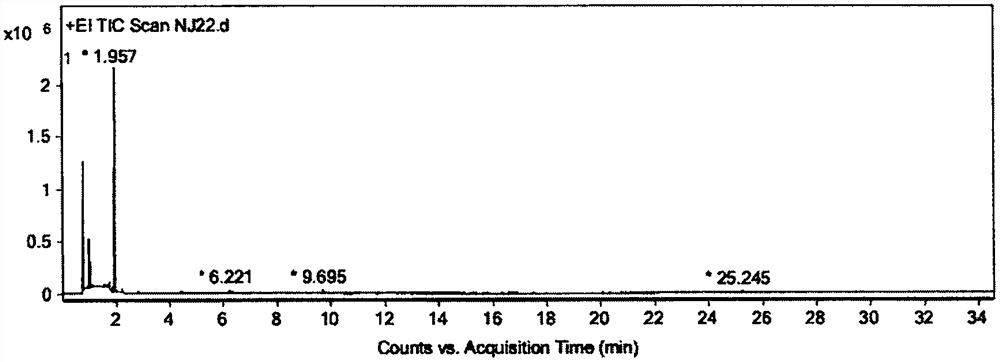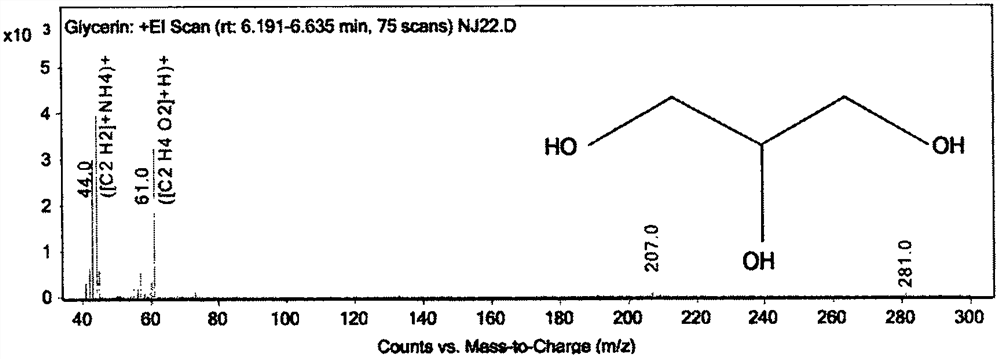Leclercia adcarboxglata NJ22 taking lactic acid as carbon source and application of Leclercia adcarboxglata NJ22
A technology of non-decarboxylated Lucka, NJ22, applied in the field of microorganisms, can solve the problems of reducing the quality of liquor, suppressing the main aroma, and increasing the content
- Summary
- Abstract
- Description
- Claims
- Application Information
AI Technical Summary
Problems solved by technology
Method used
Image
Examples
Embodiment 1
[0017] Example 1 of the present invention: Isolation and Identification of Lactic Acid Utilizing Bacteria NJ22
[0018] (1) Isolation and Screening of Lactic Acid Utilizing Bacteria NJ22
[0019] Weigh 1g of the pit mud sample and add it to the improved Lu-Ye liquid medium (lactic acid 1g / L; (NH4)2SO4 2g / L; Na2HPO4·12H2O 14.3g / L; KH2PO4 3g / L; MnSO4·H2O 0.28mg / L; FeSO4·7H2O 0.3mg / L; MgSO4·7H2O 0.06mg / L; CaCl2 1mg / L; CuSO4 0.05mg / L; H3BO3 0.05mg / L), static culture for 48h to enrich the lactic acid utilization bacteria; Dilute the bacteria collection solution step by step, choose 10-1, 10-2, 10-3 three concentration gradients, draw 100uL of the dilution, and spread it on the improved Lu-Ye solid medium; place the culture dish upside down in the incubator Medium culture, 32 ℃, 3 to 5 days.
[0020] (2) Purification
[0021] Pick a single colony on a petri dish, and purify it on the modified Lu-Ye medium by the three-streak method. After three consecutive purifications, a pure s...
Embodiment 2
[0038] Embodiment 2 of the present invention: utilize lactic acid to carry out fermentation, the detection of fermentation product
[0039] Specific steps:
[0040] (1) Inoculate the non-decarboxylated Luxella NJ22 into the modified Lu-Ye liquid medium and culture at 30°C for 72h
[0041] (2) Centrifuge, discard the bacteria, and leave the supernatant
[0042] (3) Filter the supernatant with a 0.22 μm microporous membrane to remove bacteria.
[0043] (4) The sample is subjected to chromatographic mass spectrometry analysis, and the analysis and detection conditions are:
[0044] Chromatographic column: Agilent DB-5 30m*0.32mm, 0.25um
[0045] Carrier gas: helium, flow rate: 1.8ml / min, split ratio = 5:1
[0046] Heating program: 40°C, keep 4min; 10°C / min rise to 100°C, keep 0min; 25°C / min rise to 200°C, keep 0min.
[0047] Front inlet temperature: 150°C
[0048] Ion source temperature: 230°C
[0049] Quadrupole temperature: 150°C
[0050] Injection volume: 1μL
[0051]...
PUM
 Login to View More
Login to View More Abstract
Description
Claims
Application Information
 Login to View More
Login to View More - R&D
- Intellectual Property
- Life Sciences
- Materials
- Tech Scout
- Unparalleled Data Quality
- Higher Quality Content
- 60% Fewer Hallucinations
Browse by: Latest US Patents, China's latest patents, Technical Efficacy Thesaurus, Application Domain, Technology Topic, Popular Technical Reports.
© 2025 PatSnap. All rights reserved.Legal|Privacy policy|Modern Slavery Act Transparency Statement|Sitemap|About US| Contact US: help@patsnap.com



